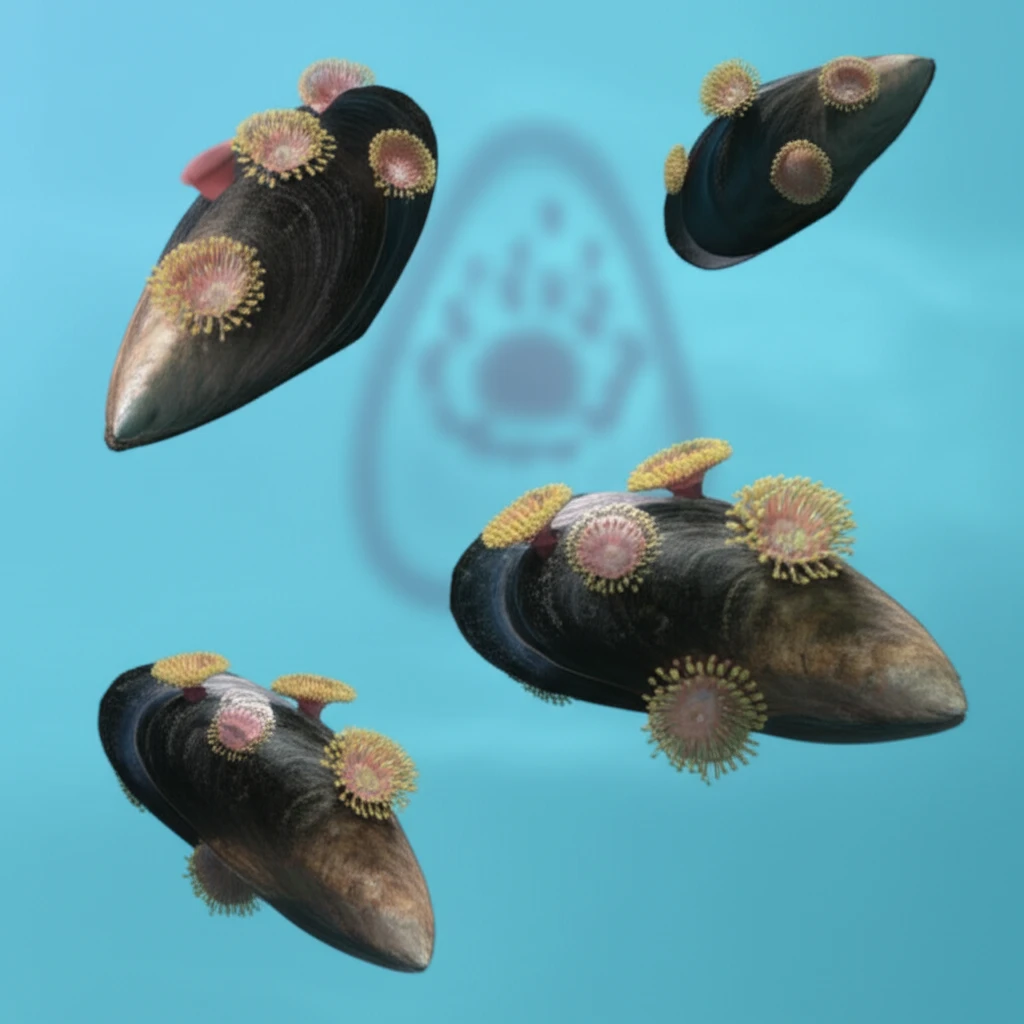
Hidden Threat: The Rise of Mussel Allergy and What You Need to Know
"Discover how seemingly harmless mussels can trigger serious allergic reactions, impacting seafood lovers and industry workers alike."
For seafood enthusiasts, mussels are often a delightful culinary experience. However, an increasing number of individuals are discovering a hidden danger lurking within these ocean delicacies: a heightened risk of allergic reactions. While seafood allergies are relatively well-known, the specific allergy to mussels and the beadlet anemone, often found on their shells, presents a unique challenge that demands attention.
A recent study published in the 'Journal of Investigational Allergology and Clinical Immunology' sheds light on two cases of occupational asthma caused by Actinia equina, commonly known as the beadlet anemone. These cases highlight the potential for serious respiratory issues arising from exposure to these creatures, particularly for those working in the mussel industry.
This article aims to explore the science behind mussel allergies, the risks associated with Actinia equina, and practical steps you can take to protect yourself. Whether you're a seafood lover, a mussel industry worker, or simply someone interested in understanding the complexities of food allergies, this guide offers essential insights to help you navigate this emerging health concern.
Decoding Mussel Allergy: What's Causing the Reaction?

Mussel allergy, like other food allergies, occurs when the immune system mistakenly identifies proteins in mussels as harmful. This triggers an allergic response, leading to symptoms that can range from mild to severe. It's crucial to distinguish between a general seafood allergy and a specific mussel allergy, as management and prevention strategies may differ.
- Skin Reactions: Hives, itching, eczema
- Respiratory Symptoms: Sneezing, coughing, wheezing, shortness of breath
- Gastrointestinal Issues: Nausea, vomiting, diarrhea
- Ocular Symptoms: Itchy, watery eyes
- In severe cases: Anaphylaxis, a potentially life-threatening reaction requiring immediate medical attention
Staying Safe: Practical Tips for Avoiding Mussel Allergy Triggers
The rise of mussel allergy and anemone-related reactions calls for increased vigilance among consumers and industry workers. By understanding the risks and taking proactive measures, you can continue to enjoy seafood safely. Always be aware of potential cross-contamination in kitchens and processing facilities. If you suspect you have a mussel allergy, consult an allergist for proper diagnosis and management. Staying informed and prepared is key to protecting your health and enjoying the culinary delights of the sea.
